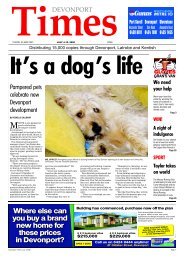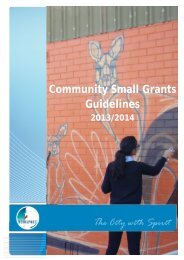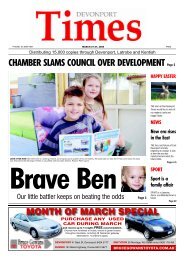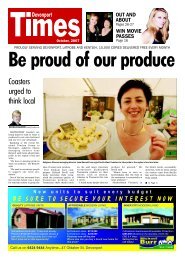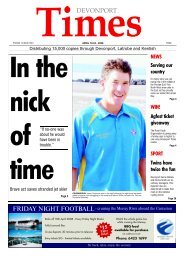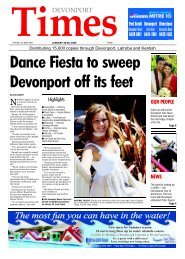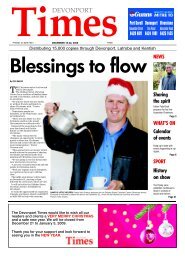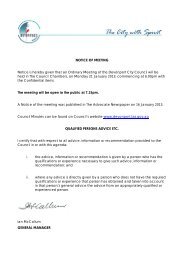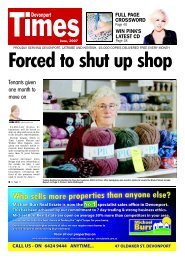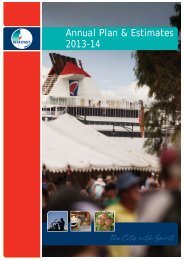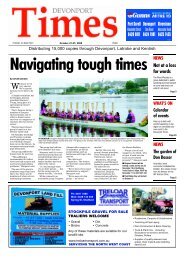Public Open Space Guidelines 2.17 Mb - Devonport City Council
Public Open Space Guidelines 2.17 Mb - Devonport City Council
Public Open Space Guidelines 2.17 Mb - Devonport City Council
You also want an ePaper? Increase the reach of your titles
YUMPU automatically turns print PDFs into web optimized ePapers that Google loves.
Appendix 2: Core Service Standards for each Landscape Character:Landscape CharacterBushland Landscape (B)Community Garden (CG)Containerised Landscape(CL)Fire Management (FM)Formal Parkland (FP)Informal Parkland (IP)Lake/ Pond (LP)<strong>Open</strong> Grassy Area (OGA)Road Side Reserve (RSR)Turf (T)Wetland (W)General ProvisionA bushland setting, whether it be completely indigenous vegetation or a mix of Australian nativesand indigenous. No exotics plants are allowed, with the exception of lawn. Allow controlled publicaccess, dog restrictions, etc.Community garden experience, educational, clubs etc.Predominantly used in commercial areas where space is limited for in-ground plantings.Area managed in consultation with the Tasmanian Fire Services.A more formal setup; can be located in central activity nodes, mostly exotic plantings, annualplants, can include natives.A more relaxed garden style than formal parkland, can be located in activity nodes, a mix ofnatives and exotics can include annuals and perennials.Minimum width of 30 meters, design of edges to maximise diversity and safety.Not recommended for purposes other than Water ManagementRoad reserve with trees to be preserved.Street trees in every road reservation possible. Street trees in all new urban arterials, along all majorroads, railways and entrances to the city.Provide plant buffers to separate and screen residential areas from industrial zones or majortransport routes to minimise dominance of negative sights and sounds.Provision of managed park and sports turf to meet the demand for users, individual sports codesand competitions at the sub-region level.Provided for recreational experiences through controlled access, provision of bird hides orboardwalks. Indigenous/ native plantings only.PART B: PUBLIC OPEN SPACE CLASSIFICATION SYSTEM PAGE 9



